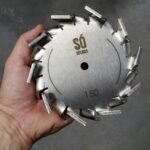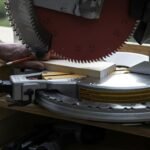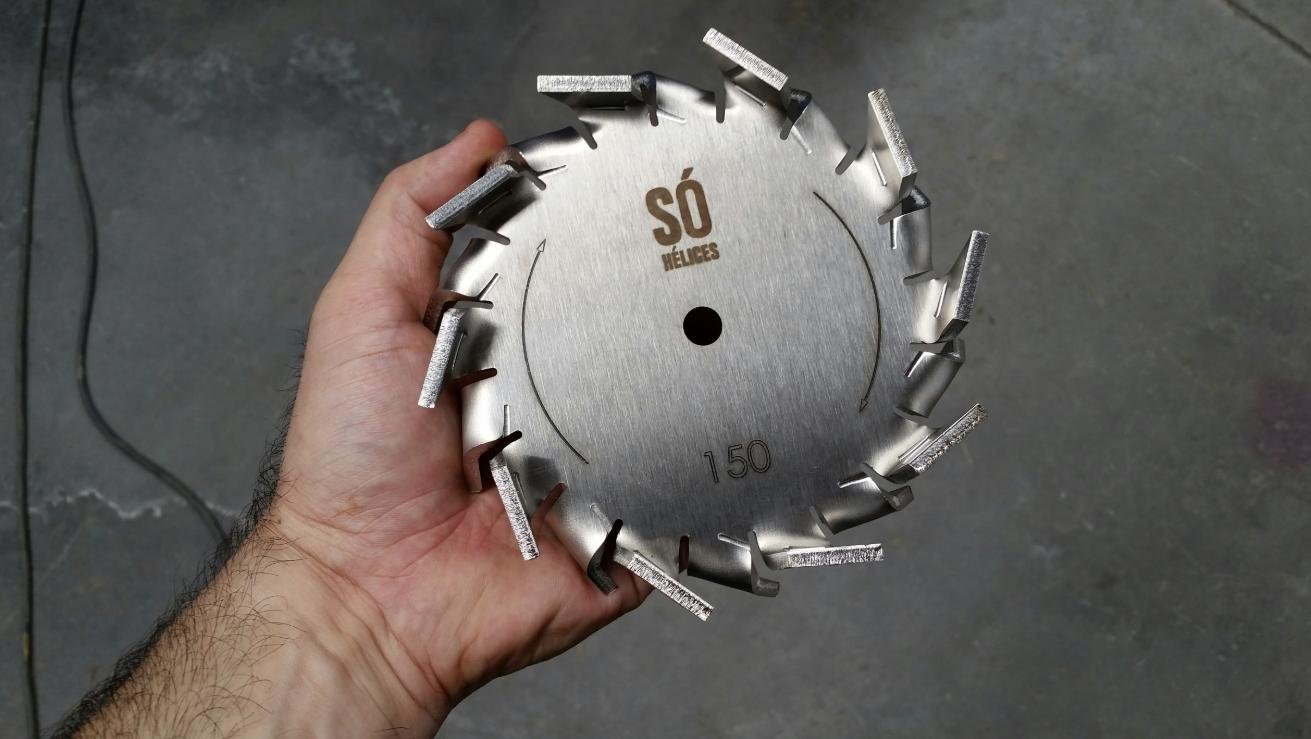Introduction to Scroll Saw Blade Breakage
Scroll saw blade breakage is a common issue faced by many woodworkers and hobbyists using this versatile tool. The scroll saw, known for its precision and ability to create intricate designs, relies heavily on the integrity of its blades. However, users often find themselves frustrated by unexpected breakage during their projects, raising questions about the underlying causes. Understanding the reasons that contribute to blade breakage is essential for improving both the performance of the scroll saw and the quality of the finished work.
There are various factors that can lead to the premature failure of scroll saw blades. These include improper blade tensioning, inadequate blade selection for specific materials, and user techniques that may not align with best practices. Each of these factors not only affects the longevity of the blades but can also impact the overall cutting performance, potentially resulting in uneven edges or damaged pieces. By addressing these issues, users can mitigate the risk of blade breakage and enjoy a more rewarding woodworking experience.
Moreover, a thorough examination of scroll saw blade breakage can reveal insights into the mechanics of the tool itself. This understanding allows users to make informed choices when selecting blades, adjusting tension, and setting up their cutting materials. As we delve deeper into the topic, we will explore not only the common reasons for blade breakage but also practical solutions and preventive measures that can enhance efficiency. Gaining this knowledge is invaluable, as it ultimately contributes to the success of various projects and reduces the frustration associated with frequent blade replacement.
Common Causes of Blade Breakage
Blade breakage on a scroll saw can be a frustrating experience for both novice and experienced woodworkers. Understanding the underlying factors that contribute to these breakages is essential for enhancing the life of the blade and achieving optimal cutting results. One of the primary reasons for blade failure is improper tensioning. Scroll saw blades require a specific amount of tension to function effectively. When the blade is too loose, it can flex excessively during cutting, leading to fractures. Conversely, if the blade is overly tight, it can cause undue stress, increasing the risk of breakage. It is advisable to follow the manufacturer’s guidelines for blade tension and periodically check the settings to ensure they remain optimal.
Another common cause of blade breakage stems from using the incorrect type of blade for the material being cut. Each blade is designed for specific applications, and using a blade that is not suited to the material can result in premature wear and breakage. For instance, cutting dense hardwood with a blade meant for softer materials can lead to unexpected failures. It is crucial to select the appropriate blade type based on the material’s thickness and hardness, ensuring compatibility with the specific cutting task. This selection process not only aids in reducing breakage but also improves the overall quality of the cut.
Poor cutting technique is also a significant contributor to blade breakage. Applying excessive force while sawing or attempting to cut too quickly can place unnecessary stress on the blade. This can lead to overheating and subsequent breaking. It is important to adopt a deliberate and controlled approach, allowing the saw to do the work without forcing it through the material. By understanding these common causes, woodworkers can take proactive measures to minimize blade breakage and enhance their scroll saw experience.
The Role of Blade Quality
The quality of scroll saw blades plays a crucial role in determining their durability and performance. When embarking on a woodworking project, one must consider the types of materials used in blade construction. Low-cost scroll saw blades often utilize inferior materials that may lead to quicker wear or even premature breakage. Commonly, these blades are manufactured from low-carbon steel, which, while economical, lacks the necessary hardness and resilience required for sustained use across various materials.
In contrast, high-quality blades are typically crafted from superior materials such as high-speed steel (HSS) or carbide, which have enhanced durability and resistance to heat and wear. HSS blades can withstand extended usage without diminishing their cutting efficiency, making them a favorable choice for both amateur and professional woodworkers. Additionally, some blades are coated with titanium or other materials to further enhance their lifespan and resistance to corrosion, ensuring consistent performance over time.
When selecting the appropriate blade quality for specific projects, it is essential to match the blade characteristics with the material being cut. Thicker woods or denser materials may require blades specifically designed for heavy-duty use, while finer or delicate projects may benefit from precision blades that provide tighter curves and intricate details. Investing in quality blades can result in not only a smoother cutting experience but also reduce the frequency of blade breakage, allowing for more efficient project completion.
Ultimately, choosing the right scroll saw blades is a balance between cost and performance. By prioritizing quality, woodworkers can enhance their overall experience and productivity while significantly reducing the frustration associated with blade breakage.
Material Considerations for Scroll Saw Cutting
Choosing the right material for scroll saw cutting is essential, as different materials have unique properties that can significantly influence blade performance and durability. One of the most common materials used in scroll saw projects is wood. Hardwood, such as oak or maple, is typically denser and tougher than softwood like pine. This difference in density can lead to increased stress on the blade, which may result in breakage if the wrong type of blade is used. For hardwood cutting, using a finer tooth blade is advisable, as it reduces the force required to cut through the denser material and enhances accuracy.
Acrylic is another popular material, favored for its versatility and aesthetic appeal. However, working with acrylic can pose its own challenges. This synthetic material is prone to chipping and cracking if the scroll saw blade is not adequately suited for the task. A blade with a higher tooth count is often recommended for acrylic, as this facilitates smoother cuts and decreases the risk of breakage. It is also crucial to operate at the correct speed to prevent overheating, as this can also lead to blade failure during cutting.
Metal is another material that requires a different approach. Cutting through metal typically involves greater blade strain due to its hardness compared to wood and acrylic. As such, it is essential to choose specialized metal cutting blades that are designed to handle the higher demands. Bi-metal blades, for instance, offer both flexibility and durability, making them suitable for intricate metal designs. When working with such materials, it is advisable to use lower speeds and apply steady pressure to reduce the risk of blade breakage.
Tension and Alignment: Keys to Maintaining Blade Integrity
The integrity of scroll saw blades is significantly influenced by the factors of tension and alignment. Proper tensioning ensures that the blade is securely held in place, allowing for smooth operation and precise cuts. Conversely, inadequate tension may lead to rapid wear or breakage, posing risks to both the workpiece and the user. To achieve the correct tension, it is essential to follow the manufacturer’s guidelines. Generally, a properly tensioned blade should produce a distinct, high-pitched tone when plucked gently.
Once correct tension is established, the second critical factor to consider is alignment. Misalignment occurs when the blade is positioned incorrectly within the scroll saw, which can happen during installation or as a result of wear and tear. An improperly aligned blade will cause excessive strain on particular segments, leading to premature wear or even complete failure. To check for alignment, ensure that the blade is perpendicular to the table and follows the intended cutting path without deviating to the left or right.
To maintain blade integrity, regularly inspect both the tension and alignment before initiating any cutting tasks. Begin by loosening the blade and gently re-seating it, then retighten it to the recommended tension. Afterward, verify that the blade is properly aligned using the table or any built-in alignment guides. Make adjustments as necessary, ensuring that the blade runs true during operation.
In summary, maintaining optimal tension and alignment on your scroll saw blades is crucial for preventing breakage. By adhering to these best practices, you can enhance blade longevity and performance, resulting in a smoother, more efficient woodworking experience. Regular inspections and adjustments can significantly reduce the chances of blade failure, keeping both your projects and yourself safe while working.
Cutting Technique: Best Practices to Prevent Breakage
When using a scroll saw, adhering to proper cutting techniques is essential to minimize blade breakage. One of the crucial factors is speed control. Beginners often make the mistake of operating the saw at high speeds, particularly when first starting a cut. It is advisable to begin at a slower speed and gradually increase as you become more comfortable. The slower pace allows for better control over the blade and can significantly reduce the likelihood of the blade binding or snapping.
Another important aspect is the feeding technique. Maintaining a steady feed rate is vital while cutting intricate designs. Pushing the material too quickly can cause strain on the blade, leading to fractures. It is best to allow the saw to do the work and feed the material steadily, ensuring that the pressure applied is consistent. Sudden jerks or stopping can create tension in the blade, increasing the chances of breakage.
Furthermore, maintaining consistent hand pressure is necessary for cutting accuracy and blade longevity. If the pressure is uneven, it can lead to twisting or binding, which are primary causes of blade breakage. Practitioners should develop a feel for how much pressure is needed and aim to keep this pressure uniform throughout the entire cutting process.
Additionally, ensuring that the workpiece is properly supported can greatly influence the outcome. Use of a cutting mat or bench can help stabilize the material, reducing unwanted movements that might stress the blade. Lastly, users are encouraged to practice regularly, as experience will allow them to intuitively adjust their techniques to improve overall precision and reduce blade wear.
Blade Maintenance: Extending Blade Life
Maintaining the blades of your scroll saw is essential for enhancing longevity and performance. Cleanliness is paramount; removing sawdust and resin buildup can significantly improve a blade’s efficiency. After each use, it is advisable to gently wipe down the blades with a clean, dry cloth or a soft brush to eliminate any debris. For more thorough cleaning, a mixture of water and mild detergent can be utilized. However, ensure that blades are thoroughly dried before being stored to prevent rust. Regular cleaning not only helps in maintaining sharp edges but also contributes to smoother cutting.
Identifying when to replace scroll saw blades is also vital in blade maintenance. Blade wear is often not immediately visible but can lead to poor cutting results. Signs that a blade needs replacement include dull cutting, excessive resistance while sawing, or noticeable vibrations during operation. To maximize performance, it is recommended to replace blades after a specified number of hours of use or once you observe these signs. Keeping an inventory of used blades, along with usage times, can help maintain optimal conditions for your saw’s performance.
Proper storage of scroll saw blades is equally important in prolonging their life. Blades should be stored in a way that prevents bending, breaking, or dulling. A dedicated blade case or holder designed for scroll saw blades can provide a protective environment. Additionally, separating blades by type and size can facilitate easier access and help to prevent accidental damage. By allocating time for regular maintenance, including cleaning, timely replacement, and proper storage, you can ensure that your scroll saw blades remain effective and last longer, enhancing your overall woodworking experience.
Troubleshooting Blade Breakage Issues
Experiencing blade breakage on a scroll saw can be both frustrating and puzzling for woodworkers. To effectively troubleshoot the issue, it is crucial to analyze various factors that could be contributing to the problem. Start with the type of blades you are using; ensure they are appropriate for the material and thickness of the wood you are cutting. Using the wrong type of blade can lead to excessive strain and eventual breakage.
Next, examine your scroll saw settings, such as the speed and tension of the blade. Improper tension might cause the blade to flex too much, increasing the likelihood of breakage. To check the tension, consult your scroll saw’s manual for the recommended specifications and make adjustments as necessary. Additionally, operating the saw at an incorrect speed for the material can lead to blade damage. Experiment with different speeds to find the sweet spot that best suits your project.
Another aspect to evaluate is the alignment of the blade. Ensure that the blade is properly installed and aligned with the table. Misalignment may cause uneven pressure on the blade during cutting, resulting in premature breakage. Regularly inspect the blade and the mounting components to confirm that they do not have any wear or damage.
Furthermore, consider the feeding technique. Feeding the wood too quickly or with excessive force can lead to blade breakage. Instead, allow the saw to do the work by applying gentle and steady pressure. Lastly, be aware of the condition of your material; harder woods or materials with knots may require a different approach and a blade designed specifically for such challenges.
By methodically addressing these factors, you can effectively pinpoint the causes behind blade breakage and apply appropriate corrective measures.
Conclusion: Mastering Your Scroll Saw Experience
In this exploration of blade breakage, we have delved into several factors that contribute to this common issue faced by scroll saw enthusiasts. Understanding these elements is crucial for anyone seeking to enhance their craftsmanship. By recognizing the importance of the appropriate blade selection, proper tension, and maintenance practices, you can significantly reduce instances of breakage and improve your overall effectiveness when using a scroll saw.
Choosing the right blade is essential, as every project may require a different blade type depending on material thickness and the intricacy of cuts. Additionally, appropriate blade tension should be regularly checked and adjusted to suit the requirements of your creation. Too much tension can lead to breakage, while insufficient tension can cause inaccurate cuts. Techniques discussed, such as ensuring a steady feed rate and maintaining proper cutting posture, are also vital in minimizing stress on the blade.
Moreover, periodic maintenance of your scroll saw is paramount. Keeping the saw clean and ensuring mechanical parts are functioning correctly can extend the life of both the saw and its blades. The tips we shared are designed to be actionable and impactful for artists of all skill levels, as they navigate their journey with scroll saw projects.
Ultimately, the journey toward mastering your scroll saw experience is both rewarding and filled with learning opportunities. Embracing experimentation and applying the knowledge gained from this discussion will not only enhance the quality of your projects but also nurture an appreciation for the craft. As you implement these strategies, we encourage you to enjoy the creative process and take pride in your woodwork outputs, knowing you are equipped to work through challenges effectively.






